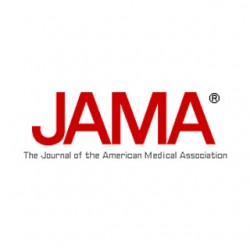
Importance Patient-centered medical homes have not been shown to reduce adverse outcomes or costs in adults or children with chronic illness.
Objective To assess whether an enhanced medical home providing comprehensive care prevents serious illness (death, intensive care unit [ICU] admission, or hospital stay >7 days) and/or reduces costs among children with chronic illness.
Design, Setting, and Participants Randomized clinical trial of high-risk children with chronic illness (≥3 emergency department visits, ≥2 hospitalizations, or ≥1 pediatric ICU admissions during previous year, and >50% estimated risk for hospitalization) treated at a high-risk clinic at the University of Texas, Houston, and randomized to comprehensive care (n = 105) or usual care (n = 96). Enrollment was between March 2011 and February 2013 (when predefined stopping rules for benefit were met) and outcome evaluations continued through August 31, 2013.
Interventions Comprehensive care included treatment from primary care clinicians and specialists in the same clinic with multiple features to promote prompt effective care. Usual care was provided locally in private offices or faculty-supervised clinics without modification.
Main Outcomes and Measures Primary outcome: children with a serious illness (death, ICU admission, or hospital stay >7 days), costs (health system perspective). Secondary outcomes: individual serious illnesses, medical services, Medicaid payments, and medical school revenues and costs.
Results In an intent-to-treat analysis, comprehensive care decreased both the rate of children with a serious illness (10 per 100 child-years vs 22 for usual care; rate ratio [RR], 0.45 [95% CI, 0.28-0.73]), and total hospital and clinic costs ($16 523 vs $26 781 per child-year, respectively; cost ratio, 0.58 [95% CI, 0.38-0.88]). In analyses of net monetary benefit, the probability that comprehensive care was cost neutral or cost saving was 97%. Comprehensive care reduced (per 100 child-years) serious illnesses (16 vs 44 for usual care; RR, 0.33 [95% CI, 0.17-0.66]), emergency department visits (90 vs 190; RR, 0.48 [95% CI, 0.34-0.67]), hospitalizations (69 vs 131; RR, 0.51 [95% CI, 0.33-0.77]), pediatric ICU admissions (9 vs 26; RR, 0.35 [95% CI, 0.18-0.70]), and number of days in a hospital (276 vs 635; RR, 0.36 [95% CI, 0.19-0.67]). Medicaid payments were reduced by $6243 (95% CI, $1302-$11 678) per child-year. Medical school losses (costs minus revenues) increased by $6018 (95% CI, $5506-$6629) per child-year.
Conclusions and Relevance Among high-risk children with chronic illness, an enhanced medical home that provided comprehensive care to promote prompt effective care vs usual care reduced serious illnesses and costs. These findings from a single site of selected patients with a limited number of clinicians require study in larger, broader populations before conclusions about generalizability to other settings can be reached.

